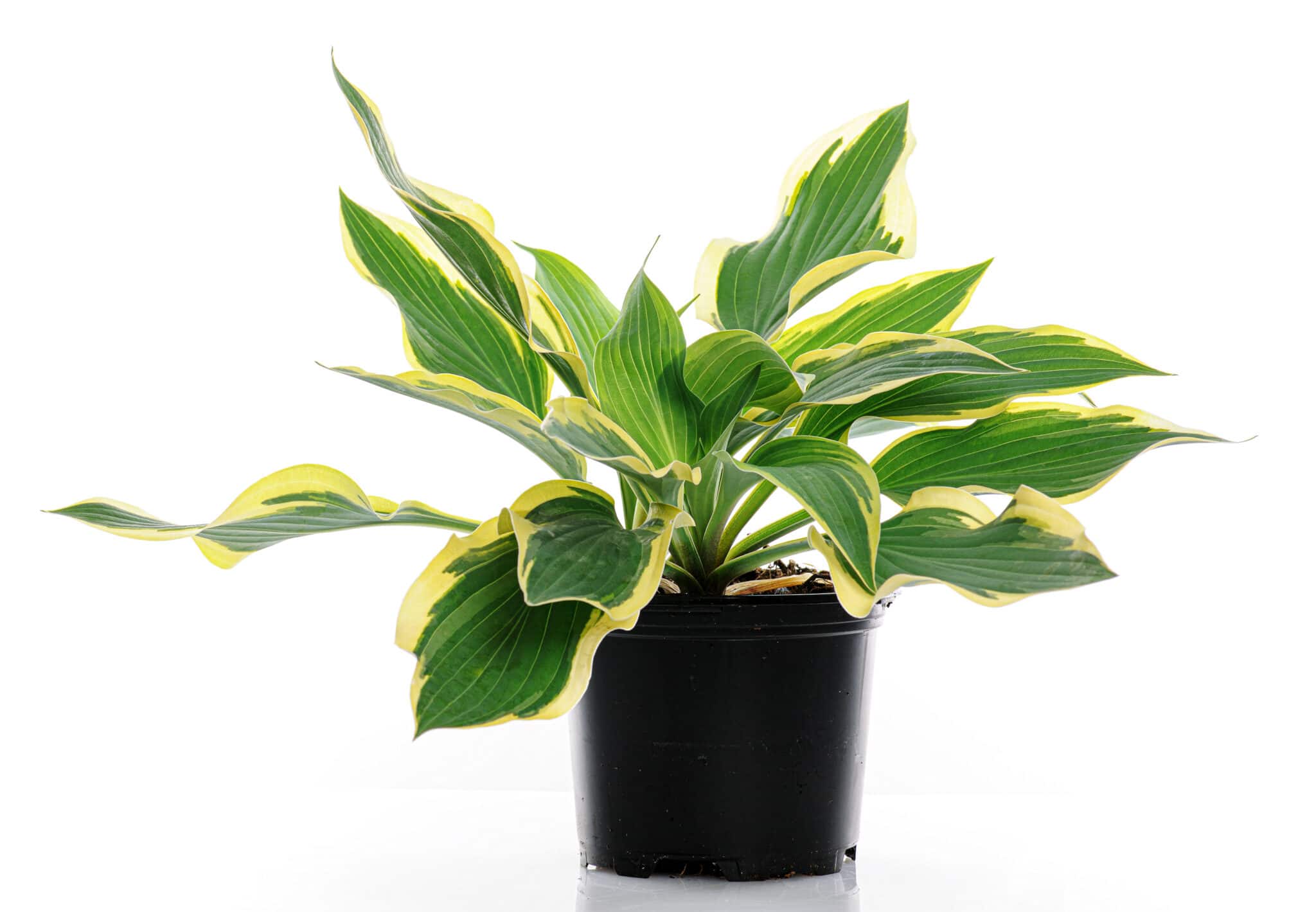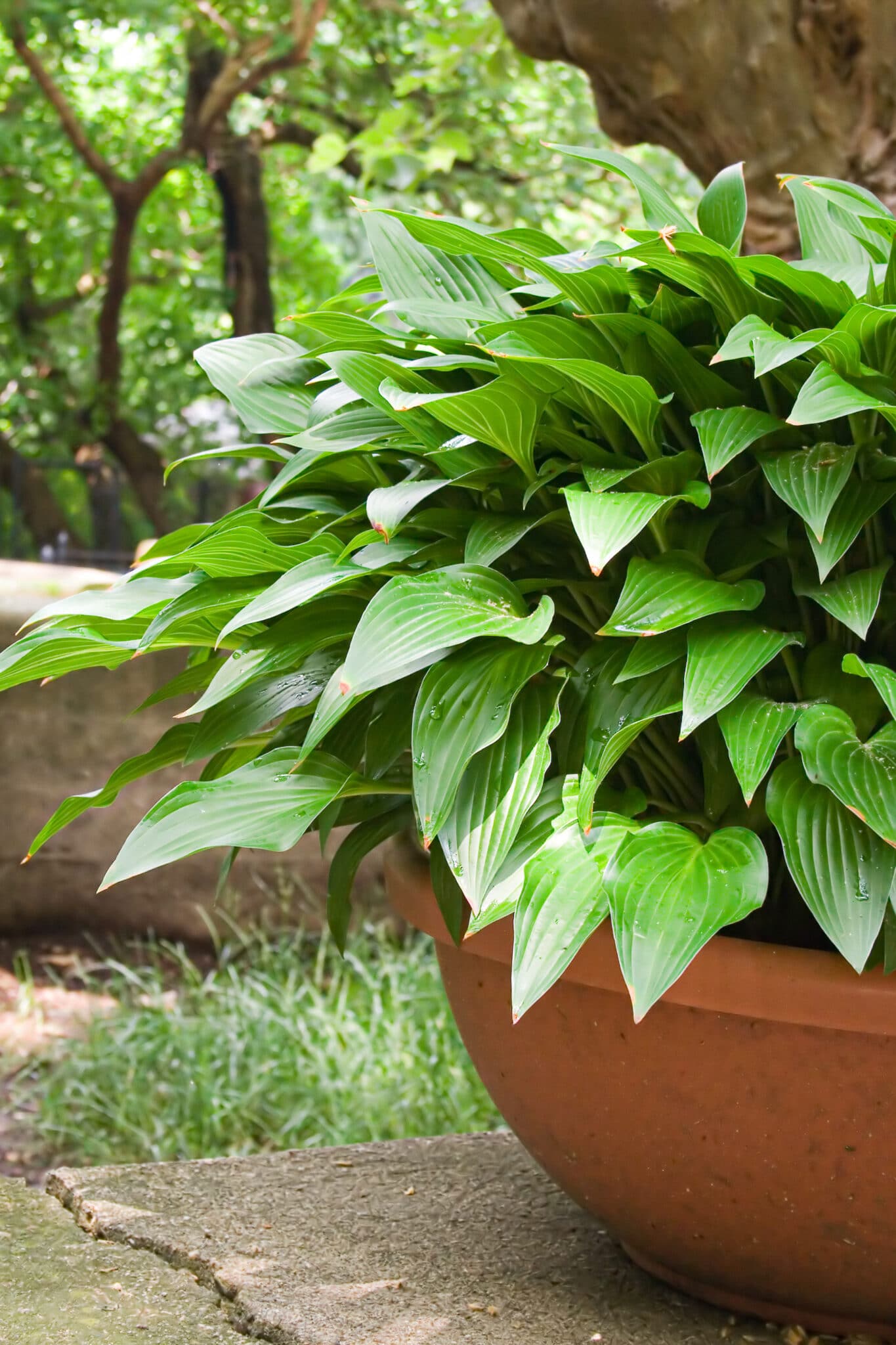How To Grow Hostas In Pots – Everything You Need to Know!
Hostas are a popular perennial plant that grows well in pots. However, many people grow them incorrectly and end up with hosta plants that grow poorly or die. Hostas grow best in the shade or filtered sun and perform poorly if planted in deep shade, full sun, or too dry of an environment. There is no need to worry, though! With these tips, you’ll be able to grow healthy hostas in pots for years to come.

What are the advantages of growing hosts in containers?
There are also many advantages grow hostas in pots! Hosta grows better in containers as opposed to garden beds because they do not have competition from weeds which can be hard to remove without harming the roots of your plants.
Container hostas are easier to grow in shady areas as well. You can move them around if the sunlight is too strong.
Hostas grow incredibly well on shaded balconies, making them one of the better plants for those types of small container garden spaces.
There are a few disadvantages to planting in pots
You will need to water your plants more often than a garden plant because the soil in pots dries out quicker.
Another disadvantage of planting hostas with containers is the risk for root rot or insect infestations due to their proximity to one another and lack of air circulation. Be sure to plant hostas at least 12 inches apart when planted in a container to avoid overcrowding.
What size pot do I need?
Pick a container that is at least 18 inches in diameter yet only about 12 inches deep. You want it to be wide enough for the root system and not too deep, so water doesn’t collect on top of the roots.
What type of pot should I use to grow my hosta?
They grow well in pots made of clay, plastic containers, and concrete, with drainage holes drilled into the bottom for water to drain through.
What kind of soil should I grow my hosta pot plants in?
A good grow mix is a mixture of compost and garden soil, or standard potting soil from your local garden center. It should be moist but not too wet so that the water doesn’t drain out as quickly. You may need to add some sand or perlite for drainage purposes.
If your plant starts looking wilted, it can mean there’s not enough oxygen available to them because their roots are stagnant with no air circulation around the root zone(s). If this happens, give the container a quick shake before watering again. Watering this ay will allow sediments on the top layer surface (and along edges) from settling back into place, opening up a few air pockets.

What type of light should I have for my hosta?
Hostas grow well in shade or partial sun, so if you don’t want your plant’s leaves turning brown, then make sure they are getting enough sunlight! You can also grow them indoors under lights. Hostas prefer indirect light from a south-facing window.
Finally, to keep your hosta healthy, keep it out of the evening sun, or it may scorch their leaves which is irreversible damage that cannot heal once it happens. In addition, the brutally hot sun will kill the roots below ground level.
How often should I water my hosta pot plants?
You should be checking on your plants every other day because they require more frequent watering than most garden flowers. Watering is an essential part of growing healthy hostas.
Pots can dry out quickly, causing stress to your hosta plants. Once stressed, they are more prone to disease and pests.
Note: It is vital to water your hostas regularly and avoid over-fertilizing them because this can cause their leaves to grow so large that they will fall in the pot with too much weight from being top-heavy.

How deep should I plant my new hosta?
Plant your new hostas at least six inches below ground level for healthy roots and leaves. If needed, you can place rocks around their base inside the container to not grow too large and fall over from being top-heavy.
What are some hostas suitable to grow in containers?
Some hostas that grow well in containers are Needlepoint, Sundance™, and Prince Edward.
If you are looking for showy, colourful hostas, you can try Northern Lights, Burgundy Glow™, or Bronze Charm. For miniature hostas try Dragon Tails, Tiny Tears, or Blue Mouse Ears. Be sure to use a smaller pot for mini hostas.
Make sure you buy plants with healthy green leaves and no brown spots; otherwise, those are signs that there may be diseases present like rust or leaf spots that could spread to your other garden or potted plants.

How do I care for my potted hosta during winter?
If you are in northern regions, your hostas will not survive a cold winter in a container. Therefore, you will need to prepare the containers to survive a cold hard frost.
You can wrap your hostas in a double wrap of burlap and store them out of the elements in a shed or a barn. You can also bring your potted hostas inside for the winter. Please keep them in a souther-facing window with a filter light and keep them well watered. Then, in the spring, they will happily go back outdoors again.
If you are in southern regions, your hostas will grow outdoors all year round. If this is the case with you, enjoy them, and they won’t need to spend any time inside during the winter months.
Can I divide my Container grown Hostas?
If your hosta has grown out of its pot but still looks healthy, it might be time for repotting. First, you can divide the plant using a sharp knife or scissors just above where new growing shoots are coming from underground.
After dividing the original root ball into two parts, each part back in its clean pot filled with a rich soil mix that drains well.
What Pests and Diseases do Hostas Have?
The most common diseases & pests that can injure hosts grown in pots include:
- Leaf spots are caused by fungi or bacteria that invade through wounds on leaves.
- Petiole-area rot starts at the base of plants’ stems and often looks like fluffy cotton balls.
- The late blight which causes brown patches on foliage as well as blackish rotted tissue between veins of older leaves;
- Some insects, such as Japanese beetles, eat holes into plant parts, including foliar tissues resulting in discoloration.

Growing Hostas In Pots – Enjoy These Wonderful Plants Without Giving up Garden Space!
Growing hostas in pots is a great way to enjoy these shade-loving perennials. They’re relatively low maintenance, so you won’t have trouble keeping them under control or getting out of hand! There are plenty of varieties available with different leaf shapes and colours for every taste–perfect if you’re looking for something unique for your container garden.
Hostas make excellent plants for decks and patios. They grow relatively quickly, so you can have a beautiful lush container plant livening up your outdoor spaces in time at all!
MOre Gardening Posts You mAy Find INteresting:

Author: Laura Kennedy
Writer & Owner of Little Yellow Wheelbarrow
Laura is a highly skilled gardener and fervent flower enthusiast. Despite her playful battle with plant spacing guidelines, Laura’s work inspires gardeners to create thriving, beautiful spaces that reflect both creativity and sustainability.









